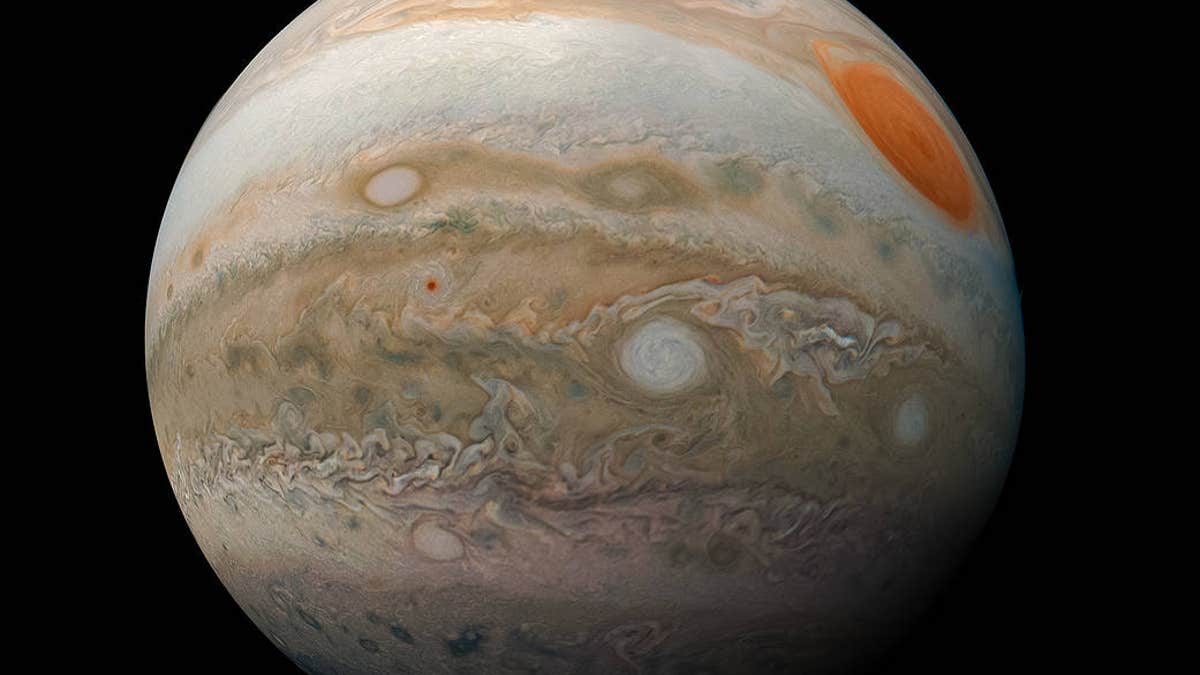Fox News Flash top headlines for July 17
Fox News Flash top headlines for July 17 are here. Check out what's clicking on Foxnews.com
Researchers have found mysterious, unexpected alternating currents going through Jupiter's atmosphere, very similar to what is seen on Earth.
Published in Nature Astronomy, researchers used data from NASA's Juno probe, which has been orbiting the celestial giant since 2016, and found the electric currents that go through Jupiter's magnetosphere don't act as they should.
The currents, which produce auroras on Jupiter just as they do on Earth, have less direct current than would be expected.

The image shows Jupiter's Great Red Spot and storms in the gas giant's southern hemisphere. (NASA/JPL-Caltech/SwRI/MSSS/Kevin M. Gill)
OCEAN ON JUPITER'S MOON EUROPA HAS TABLE SALT, JUST LIKE EARTH'S SEAS
"These observations, combined with other Juno spacecraft measurements, show that alternating currents play a much greater role in generating Jupiter's aurora than the direct current system," one of the study's co-authors, Joachim Saur, said in a statement.
Like Earth, the auroras on Jupiter are oval rings near their poles and are driven by "a gigantic system of electrical currents that connects the polar light region with Jupiter's magnetosphere," the statement added. However, Earth's currents are driven by direct currents, whereas Jupiter's are not.
"Jupiter's electric current systems are driven by the enormous centrifugal forces in Jupiter's rapidly rotating magnetosphere," Saur added. "Because of Jupiter's fast rotation -- a day on Jupiter lasts only ten hours -- the centrifugal forces move the ionized gas in Jupiter's magnetic field, which generate the electric currents."
Juno has passed over both of Jupiter's polar regions every 53 days, according to the study's abstract, and found that direct current was approximately 50 million amps, not as high as theoretical models would suggest, according to Live Science.





















